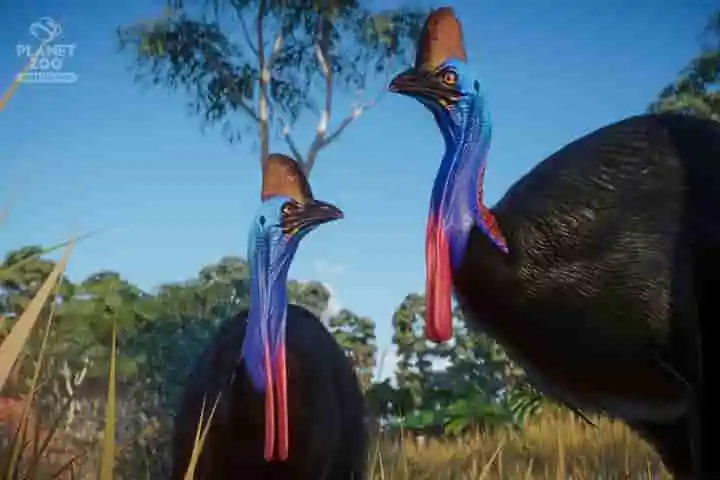Early human beings for the sake of their survival took chances if it meant taming an enormous bird for food.
The bird in question is the southern cassowary. Enormous in size, this flightless bird is found in the forests of Northern Australia and New Guinea. The creature had distinct features – jet-black and glossy feathers and a neck which is bright blue in colour. But what is significant is that they have razor sharp talons on their three toes and these are known to inflict fatal injuries and thus according to Asher Elbein of New York Times earning them the description of being “world’s deadliest bird”.
The cassowary and its claws are something to be scared and be wary of even today but according to an article in smithsonianmag.com, a study has found that they were raised several centuries ago, 18,000 years ago to be precise in New Guinea, thus earning the distinction of being among the first birds reared by ancient ancestors of man.
The findings of this research was published in the Proceedings of the National Academy of Sciences on September 27.
Study author Kristina Douglass and a Penn State archaeologist, in a statement observed: "This behaviour that we are seeing is coming thousands of years before the domestication of the chicken. And this is not some small fowl, it is a huge, ornery, flightless bird that can eviscerate you. Most likely the dwarf variety that weighs 20 kilos (44 pounds)."
While excavating two rock shelters in New Guinea, researchers discovered 1,000 fragments of fossilized cassowary eggshells. Using three-dimensional imaging, computer modelling they got a clearer and a closer look at these ancient shell pieces while they also studied morphology of eggs of modern cassowary and other birds, like emus and ostriches. The eggs were estimated to be 6,000 to 18,000 years old by using carbon dating method.
To get an idea through comparison one may consider that domestication of chicken took place no earlier than 9,500 years ago.
The ancient human beings may have looked around for eggs to be able to raise the chicks. This may have been for the purpose of eating meat and using their feathers or they may have also harvested and eaten the late-stage fertilised eggs. The latter are known as balut and these interestingly are still eaten as street food in some parts of Asia.
Also read: Contrary to belief, study suggests that male squids are concerned parents!
In the statement Douglass observed: "What we found was that a large majority of the eggshells were harvested during late stages. The eggshells look very late; the pattern is not random. They were either into eating baluts, or they are hatching chicks."
Eggs of Cassowary are pastel green in colour and are bright and in a leafy nest which is placed on the ground, the males incubate it for nearly 50 days. As these birds guard their nests which are hidden out of sight, and the eggs zealously, collecting them would have been challenging. Thus human beings in ancient times would have required to know the exact location of the nesting thus indicating that they were far more intelligent than what was previously thought of.
Commenting on this aspect, Douglass said: "It suggests that people who are in foraging communities have this really intimate knowledge of the environment and can thus shape it in ways we hadn't imagined."
On observing the eggshells carefully, the researchers found that some had burn marks on them which means that they were cooked. Also many shells were found without the char marks thereby suggesting that the cassowary chicks were raised.
Also read: Cannibalism In Australian Cane Toads Triggers Evolutionary Changes
Even though they are aggressive by nature, young chicks unlike the adults would have been easy to raise since like geese, the cassowary chicks are impressed by the first adult bird, person or animal they see.
Continuing the traditions of the ancient past, cassowary feathers even today are collected for ceremonial wear, and its meat treated as a delicacy in New Guinea.`




















